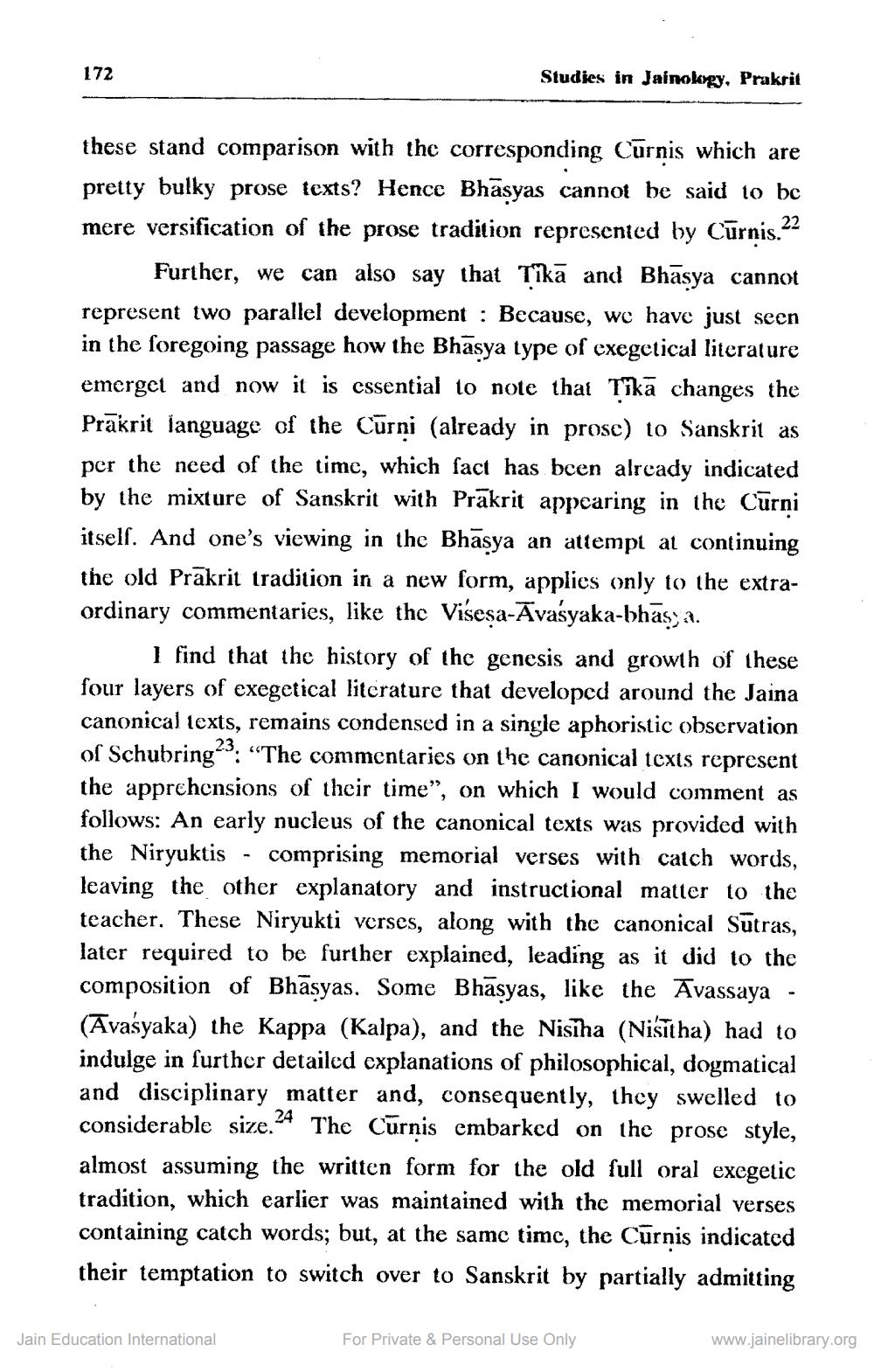________________
172
Studies in Jainology, Prakrit
these stand comparison with the corresponding Curnis which are pretty bulky prose texts? Hence Bhāsyas cannot be said 10 be mere versification of the prose tradition represented by Cūrnis.22
Further, we can also say that Tīkā and Bhasya cannot represent two parallel development : Because, we have just seen in the foregoing passage how the Bhāsya type of exegetical literature emerget and now it is essential to note that Tikā changes the Prakrit language of the Cūrni (already in prose) to Sanskrit as per the need of the time, which fact has been already indicated by the mixture of Sanskrit with Prakrit appearing in the Carni itself. And one's viewing in the Bhasya an attempt at continuing the old Prakrit tradition in a new form, applies only to the extraordinary commentaries, like the Visesa-Avasyaka-bhās, a.
I find that the history of the genesis and growth of these four layers of exegetical literature that developed around the Jaina canonical texts, remains condensed in a single aphoristic observation of Schubringas: “The commentaries on the canonical texts represent the apprchcnsions of their time", on which I would comment as follows: An early nucleus of the canonical texts was provided with the Niryuktis - comprising memorial verses with catch words, leaving the other explanatory and instructional matter to the teacher. These Niryukti verses, along with the canonical Sūtras, later required to be further explained, leading as it did to the composition of Bhāsyas. Some Bhāsyas, like the Avassaya - (Avasyaka) the Kappa (Kalpa), and the Nisīha (Nisitha) had to indulge in further detailed explanations of philosophical, dogmatical and disciplinary matter and, consequently, they swelled to considerable size.24 The Curnis embarked on the prose style, almost assuming the written form for the old full oral exegetic tradition, which earlier was maintained with the memorial verses containing catch words; but, at the same time, the Cūrnis indicated their temptation to switch over to Sanskrit by partially admitting
Jain Education International
For Private & Personal Use Only
www.jainelibrary.org




